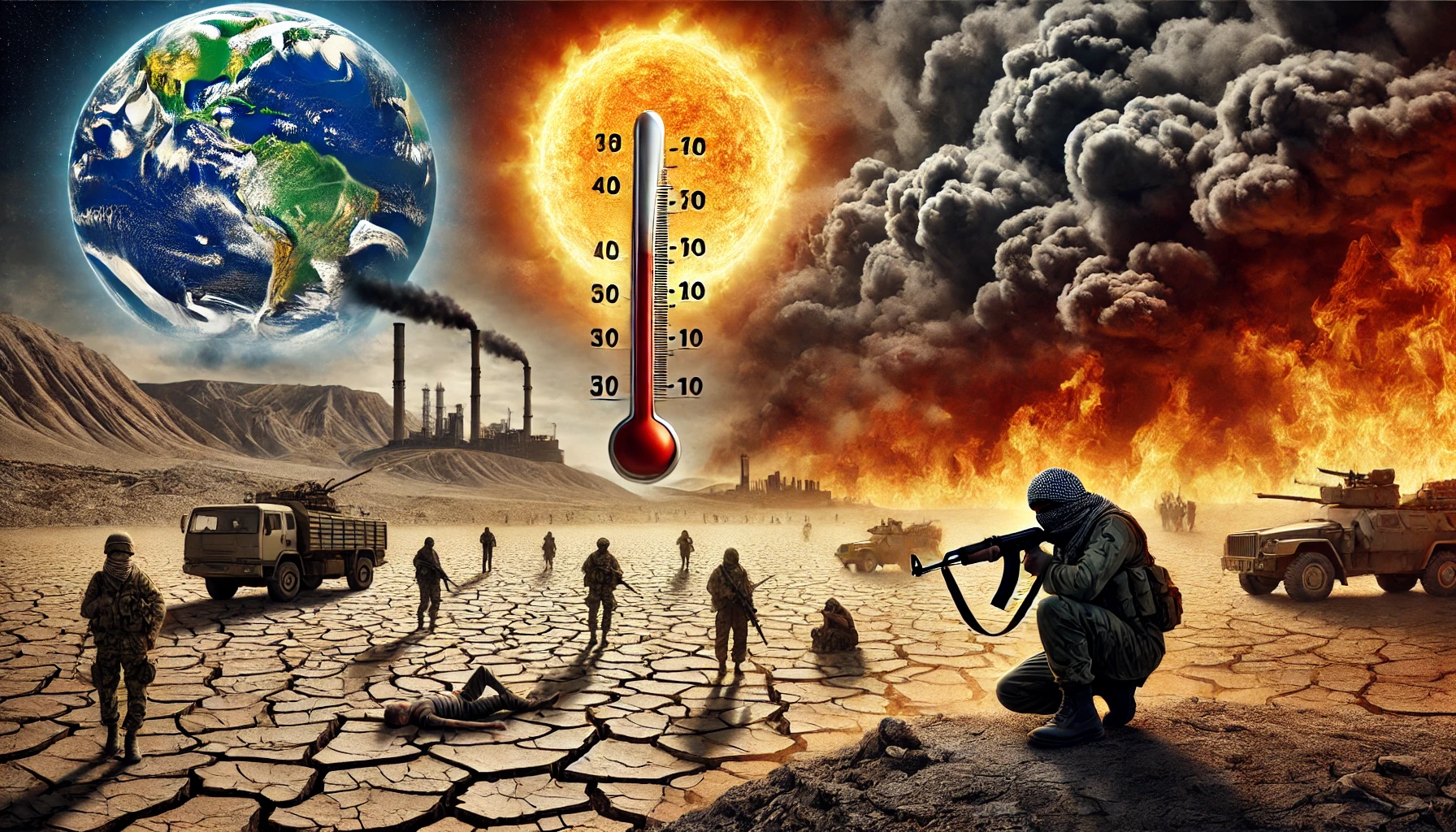Hotter Planet, Hotter Wars: The Impact of Rising Temperatures on Global Conflicts
The IMF study by Sidra Rehman and Laura Jaramillo shows that higher temperatures significantly worsen existing conflicts, with a potential 12.3% increase in conflict deaths by 2060 due to rising temperatures. The findings highlight the need for integrating climate resilience into peace and security efforts.

A study by Sidra Rehman and Laura Jaramillo, from the International Monetary Fund (IMF), explores the intricate relationship between climate change and conflict intensification. Utilizing a unique dataset created through georeferencing, the study matches weather and conflict data at a subregional level on a monthly frequency across 168 countries from 2013 to 2022. This extensive dataset comprises 300,480 observations from 2,504 subregions, providing a detailed look into how fluctuations in temperature and precipitation correlate with conflict intensity.
Rising Temperatures, Rising Tensions
The empirical results of the study reveal that higher temperatures significantly worsen conflict intensity in regions where conflicts already exist. By analyzing data from a high emissions scenario, the authors estimate that, by 2060, conflict deaths as a share of the population in a median country facing conflict could increase by 12.3% due to rising temperatures. This finding underscores the critical need to integrate climate resilience into peace and security efforts and to design climate adaptation policies that support conflict prevention and resolution.
Pathways of Climate-Induced Conflict
The authors highlight several pathways through which climate shocks can influence conflict. These include resource scarcity, food insecurity, displacement, and economic shocks. Resource scarcity, exacerbated by unequal distribution and vulnerability to climate impacts, can intensify existing social divisions and contribute to conflicts. Changes in climate patterns negatively impacting agricultural productivity can lead to food insecurity, causing social unrest and conflict. Displacement caused by climate shocks can escalate competition in both host communities and areas of origin, further straining already vulnerable social and economic systems. Economic shocks resulting from climate change, such as damage to infrastructure and reduced economic productivity, can lead to unemployment and social unrest, further destabilizing regions.
A Closer Look at Data and Methodology
The study employs a panel regression model to test the relationship between weather shocks and conflict intensity. The model uses temperature and precipitation data, alongside nighttime light data as a proxy for economic activity, to control for potential confounding factors. The results indicate a robust relationship between higher temperatures and increased conflict intensity at the subregional level. Specifically, a 1% increase in temperature is associated with a 0.2% increase in conflict intensity. However, precipitation was not found to significantly impact conflict intensity once controlling for time-country fixed effects. This could be due to the opposing effects of dry and wet conditions on resource scarcity and economic stability.
Bridging the Gap in Existing Research
The paper extends the existing literature by leveraging within-country heterogeneity and using high-frequency data at the subregional level. This approach allows for a more nuanced understanding of how weather shocks affect conflict intensity, accounting for variations within countries and across different times of the year. Previous studies have typically relied on country-year data, which masks considerable variation in social, economic, and political conditions at the subregional level. By contrast, this study’s methodology provides a more detailed and accurate picture of the impact of weather shocks on conflict.
Policy Implications and Future Research
The findings have significant policy implications. They highlight the importance of incorporating climate resilience into peace and security strategies and the need for climate adaptation policies that address the specific pathways through which climate shocks exacerbate conflict. These policies should focus on mitigating the impact of resource scarcity, enhancing food security, managing displacement, and addressing economic shocks. Integrating these considerations into national and international policy frameworks is essential for reducing the risk of conflict in a warming world.
The authors also emphasize the need for further research to better understand the mechanisms through which climate shocks influence conflict and to identify effective policy interventions. While this study provides robust evidence of the link between higher temperatures and increased conflict intensity, it cannot predict the precise impact of future climate change on conflict. Therefore, ongoing research is crucial for developing a comprehensive understanding of this complex relationship and for designing targeted interventions to mitigate conflict risks.
The study by Rehman and Jaramillo provides compelling evidence that weather shocks, particularly higher temperatures, significantly exacerbate conflict intensity in regions where conflicts already exist. The findings underscore the urgent need for integrating climate resilience into peace and security efforts and for designing effective climate adaptation policies. By addressing the specific pathways through which climate shocks intensify conflict, policymakers can better mitigate the risks posed by climate change and contribute to global peace and security.
- FIRST PUBLISHED IN:
- Devdiscourse










